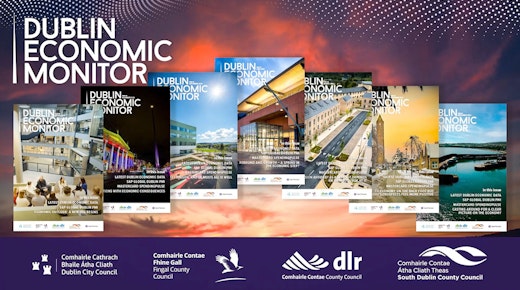The Covid-19 pandemic has caused seismic changes to the working environment, with significant amounts of staff working from home (WFH).
This has knock-on implications for the commercial office market in Dublin, as it is likely that remote working could persist to some degree long after the pandemic has lifted. Enterprises large and small are changing both radically and rapidly with Covid-19 acting as a huge accelerant. So are the ways that people can work; yet the fixed nature of the workplace and how industry functions, its delivery systems and its attitudes, has not fully responded to these significant changes.
“There is no doubt that the office is not obsolete, nor are we going to see the death of the office. There will always be a need for a space to work but is our fixation with one physical place defendable?”
What does this mean for the office?
There is no doubt that the office is not obsolete, nor are we going to see the death of the office. There will always be a need for a space to work but is our fixation with one physical place defendable?
The challenges imposed on us as a consequence of the pandemic force us to consider options and scenarios which are unprecedented, complex and are real dilemmas regardless of your point of view. Never before have we had to face widescale personal fear of the unknown, existential threats to business survival and even greater levels of uncertainty, all at the same time globally.
One also needs to be aware that the debate raging about a return to the office is a mere sideshow to much wider and more complex issues concerning how we live, learn, work and play. In a Dublin context, for example, the growth of the county’s office stock has expanded dramatically since the turn of the century – it has more than doubled and there is a further 6 million square feet under construction. Yet the volume of housing has not kept pace with this dramatic expansion. All these things are interconnected.

The debate about the future of the office is not and never has been just about largescale WFH on a fixed basis. There is a much bigger question afoot, a real paradigm shift, impacting not only where we work: but how and when we do it, and who does this office work? I see this as the shift from ‘fixed to fluid’.
Many business leaders, having survived the first wave of lockdown dilemmas, are now turning their minds to making sense of how they will navigate the new wave of uncertainty. It is incumbent on policy makers and property investors to take note of the strategy that emerges as it will undoubtedly impact demand for real estate and wider macro-economic activity.
“Business leaders’ experiences of dealing with mass remote working have exposed considerations which had not been on their radars pre-pandemic”
The planning dilemmas
Taking all their business challenges together results in quite a potent cocktail of dilemmas, such as:
- Workforce management was difficult enough pre- pandemic – is shifting to a distributed model the way forward? Is there any choice in the matter?
- Lockdown has generated newly discovered operational efficiencies; can these be maintained or is it better to revert to traditional working practices?
- Does it make sense to redirect savings from real estate expenses to employee well-being and benefits?
- Productivity during lockdown seems to have held up for the most part, although WFH seems to have a lot of merit – is it sustainable?
- Does presenteeism, the ‘Holy of Holies’ of people management, hold up anymore? Has the lockdown experience shattered the long-held and cherished connection between productivity and presence, and does this call for a more trust-based management style?
- Office work has always revolved around a physical place with four walls and a roof. Is there merit in looking at the potential for multiple office work solutions or is it safer to stick with an either/or choice of office work and WFH?
In considering these, an interesting picture begins to emerge. For the first time ever, we are exploring some fundamental questions about how and when we work and in what settings we need to come together to get this work done. According to Mark Thompson, the former CEO of the New York Times;
“One of the few positive benefits of the coronavirus crisis may well be a further acceleration of our transition from the regimented offices of the past and the archaic management philosophy that built them to something more flexible, more individuated, more human-shaped”.
Mark Thompson, Former CEO of the New York Times
Office buildings themselves will remain in Dublin and across the world, and will not be consigned to the scrapheap of the working environment, but their purpose has altered unequivocally. The ‘home versus office’ debate is only one element of this paradigm shift; since the recent enforced experiment of working beyond the confines of the traditional office demonstrates that consumers of commercial offices now have real choice – and it has also opened up many other questions into how we can shape our working landscape.





